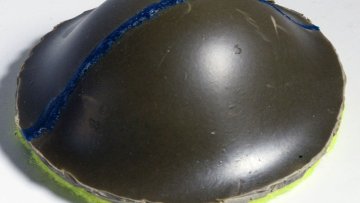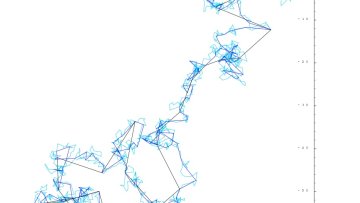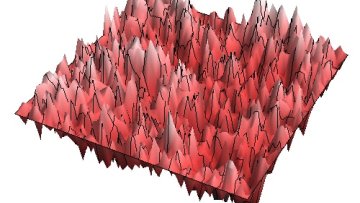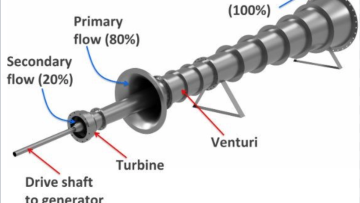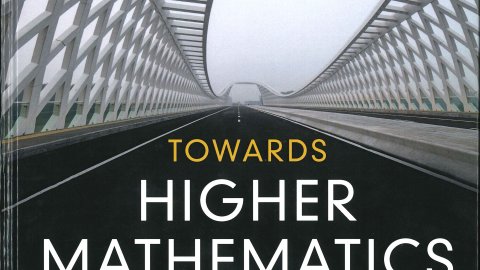Everyday life tells us that curved objects may have two stable states: a contact lens (or the spherical cap obtained by cutting a tennis ball, see picture) can be turned ‘inside out’. Heuristically, this is because the act of turning the object inside out keeps the central line of the object the same length (the centreline does not stretch significantly). Such deformations are called ‘isometries’ and the ‘turning inside out’ (or everted) isometry of a thin shell is often referred to as mirror buckling.
Cycling science is a lucrative and competitive industry in which small advantages are often the difference between winning and losing. For example, the 2017 Tour de France was won by a margin of less than one minute for a total race time of more than 86 hours. Such incremental improvements in performance come from a wide range of specialists, including sports scientists, engineers, and dieticians. How can mathematics assist us?
Oxford Mathematician Ilya Chevyrev talks about his research into using stochastic analysis to understand complex systems.
Morse subsets of hierarchically hyperbolic spaces
Abstract
When dealing with geometric structures one natural question that arise is "when does a subset inherit the geometry of the ambient space"? In the case of hyperbolic space, the concept of quasi-convexity provides answer to this question. However, for a general metric space, being quasi-convex is not a quasi-isometric invariant. This motivates the notion of Morse subsets. In this talk we will motivate the definition and introduce some examples. Then we will introduce the class of hierarchically hyperbolic groups (HHG), and furnish a complete characterization of Morse subgroups of HHG. If time allows, we will discuss the relationship between Morse subgroups and hyperbolically-embedded subgroups. This is a joint work with Hung C. Tran and Jacob Russell.
The generation of electricity from elevated water sources has been the subject of much scientific research over the last century. Typically, in order to produce cost-effective energy, hydropower stations require large flow rates of water across large pressure drops. Although there are many low head sites around the UK, including numerous river weirs and potential tidal sites, the pursuit of low head hydropower is often avoided because it is uneconomic.
Kolam: An Ephemeral Women's Art of South India
Abstract
Oscar García-Prada - The Mathematics of Kolam
In Tamil Nadu, a state in southern India, it is an old tradition to decorate the entrance to the home with a geometric figure called ``Kolam''. A kolam is a geometrical line drawing composed of curved loops, drawn around a grid pattern of dots. This is typically done by women using white rice flour. Kolams have connections to discrete mathematics, number theory, abstract algebra, sequences, fractals and computer science. After reviewing a bit of its history, Oscar will explore some of these connections.
Claudia Silva - Kolam: An Ephemeral Women´s art of South India
Kolam is a street drawing, performed by women in south India. This daily ritual of "putting" the kolam on the ground represents a time of intimacy, concentration and creativity. Through some videos, Claudia will explain some basic features of kolam, focusing on anthropological, religious, educational and artistic aspects of this beautiful female art expression.
The lectures are accompanied by a photography exhibition at Wolfson College.
Towards an Integrated Understanding of Neural Networks
Abstract
Neural networks underpin both biological intelligence and modern AI systems, yet there is relatively little theory for how the observed behavior of these networks arises. Even the connectivity of neurons within the brain remains largely unknown, and popular deep learning algorithms lack theoretical justification or reliability guarantees. In this talk, we consider paths towards a more rigorous understanding of neural networks. We characterize and, where possible, prove essential properties of neural algorithms: expressivity, learning, and robustness. We show how observed emergent behavior can arise from network dynamics, and we develop algorithms for learning more about the network structure of the brain.
Spambot detection and polarization analysis: evidence from the Italian election Twitter data
Abstract
Fake accounts detection and users’ polarization are two very well known topics concerning the social media sphere, that have been extensively discussed and analyzed, both in the academic literature and in everyday life. Social bots are autonomous accounts that are explicitly created to increase the number of followers of a target user, in order to inflate its visibility and consensus in a social media context. For this reason, a great variety of methods for their detection have been proposed and tested. Polarisation, also known as confirmation bias, is instead the common tendency to look for information that confirms one's preexisting beliefs, while ignoring opposite ones. Within this environment, groups of individuals characterized by the same system of beliefs are very likely to form. In the present talk we will first review part of the literature discussing both these topics. Then we will focus on a new dataset collecting tweets from the last Italian parliament elections in 2018 and some preliminary results will be discussed.


